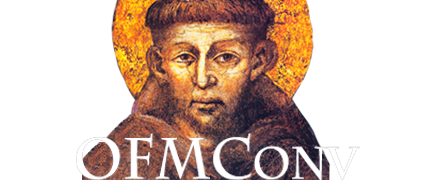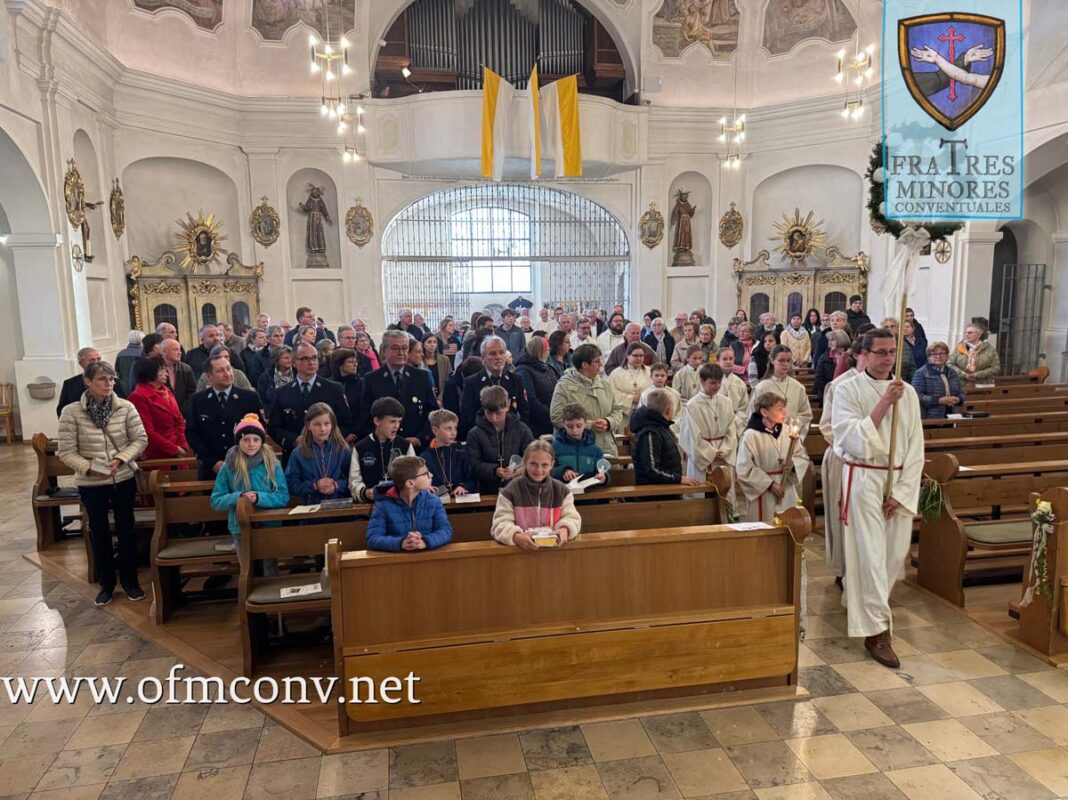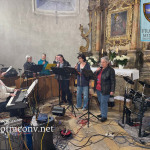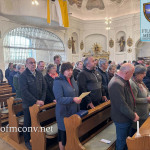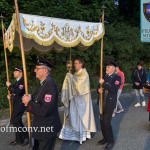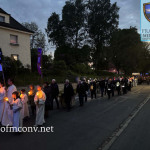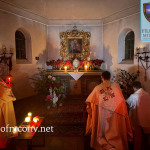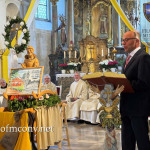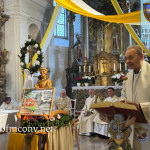On May 16-18, 2025, the Conventual Franciscans celebrated the 100th anniversary of the friary in Neustadt an der Waldnaab, in northern Bavaria, Germany. They also celebrated the 25th anniversary of the presence of the Province of St. Anthony and Bl. James of Strepar in Poland (Cracow). The celebrations were combined with the feast of the patron saint of the friary, St. Felix of Cantalice.
Those attending the celebrations included Friar Igor SALMIČ, the Assistant General for the Centralis Europae Foederatio (CEF); Friar Andreas MURK, the Minister Provincial of the Province of St. Elizabeth in Germany; Friar Mariusz KOZIOŁ, the Minister Provincial of the Province of Cracow; and other friars who have lived and worked in this city in the past.
On the first day of the jubilee celebration, Friday, May 16, Friar Mateusz MICEK, Delegate of the Minister Provincial of Germany, presided over the Mass. On Saturday, May 17, the local Pastor, Friar Thomas KOPP presided, and on Sunday, May 18, the presider was Friar Josef KREIML, Director for the Institutes of Consecrated Life and Societies of Apostolic Life for the Archdiocese of Regensburg.
In his speech, Mayor Sebastian GIERING stressed that the St. Felix Friary is a spiritual home for the city’s residents. He thanked the friars for their many years of collaboration, for their openness and for the joint initiatives they conducted to enrich the life of the local community.
Friar Stanisław STROJECKI, a former Guardian of the friary and now a missionary in Africa, expressed his deep gratitude to the friars for their many years of service and commitment in helping the mission in Uganda, which has been ongoing for twenty-five years. He also gave the friars a unique gift: a painting by a young Ugandan artist who, thanks to the support of the friary in Neustadt, was able to get an education and develop her talent. The painting depicts two friaries, one in Neustadt and the other in Kakooge, Uganda, which symbolically connect the two different worlds of the Franciscan community.
According to the local Guardian, Friar Stanisław ŚLIWIŃSKI, the cult of St. Felix of Cantalice in Neustadt an der Waldnaab began with the arrival of the Capuchin Franciscans, who had been invited by Prince Ferdinand von LOBKOWITZ in 1710.
Friar Stanisław recalled: “The most important event was the healing of the then city magistrate, Christoph Ulrich von WEINZIERL. He was suffering from a dangerous, incurable fever, from which he was miraculously cured through the intercession of the Capuchin friars who prayed to St. Felix. In gratitude, he had a wooden statue [of St. Felix] carved, which he commissioned from a local artist, Adolph GRIEGER. The statue was placed on a nearby hill so that it towered over the city and asked for its protection and blessing.”
He continued: “In 1729, a wooden chapel was built to meet the needs of the growing number of pilgrims. However, when this proved insufficient, a larger stone chapel was built in 1734, and was where the first patronal feast of St. Felix was also held. Only three years later, the stone chapel was no longer large enough to accommodate all the pilgrims arriving from all over Bohemia and its border areas. Thus another church was built and inaugurated in 1746. The statue of St. Felix was paced on its main altar, where it still stands today.”
In the beginning, the church was served by Capuchins who lived nearby and ministered there on Saturdays and Sundays, offering confession and Mass. During the period of secularization, in 1803, the Capuchins were expelled from Neustadt and, as a result, the pilgrimage movement disappeared. At the end of the 19th century, the church gradually recovered and the faithful asked the Bishop of Regensburg for priests to serve this place.
In agreement with the then Minister Provincial of the Conventual Franciscan Province of Germany, construction began on a friary adjacent to the church. In 1925, the friary was opened and a new pilgrimage movement to St. Felix Hill flourished.
Friar Mateusz MICEK explained: “In the difficult period between the two world wars, with few possessions, but with great trust in God, the Conventual Franciscans built a friary, conducted pastoral ministry and reactivated the traditional pilgrimage. People came with their worries and illnesses, their pleas for their families, for their daily bread, and for peace. They came and continue to come, even today, because they know: ‘Here I can lay down my burden. Here someone will listen to me. Here someone will pray for me. Here I can be weak and find new strength.’”
Friars from the Province of Cracow have been living in the friary and ministering at the Church of St. Felix since 2000.
Friar Jan M. SZEWEK
